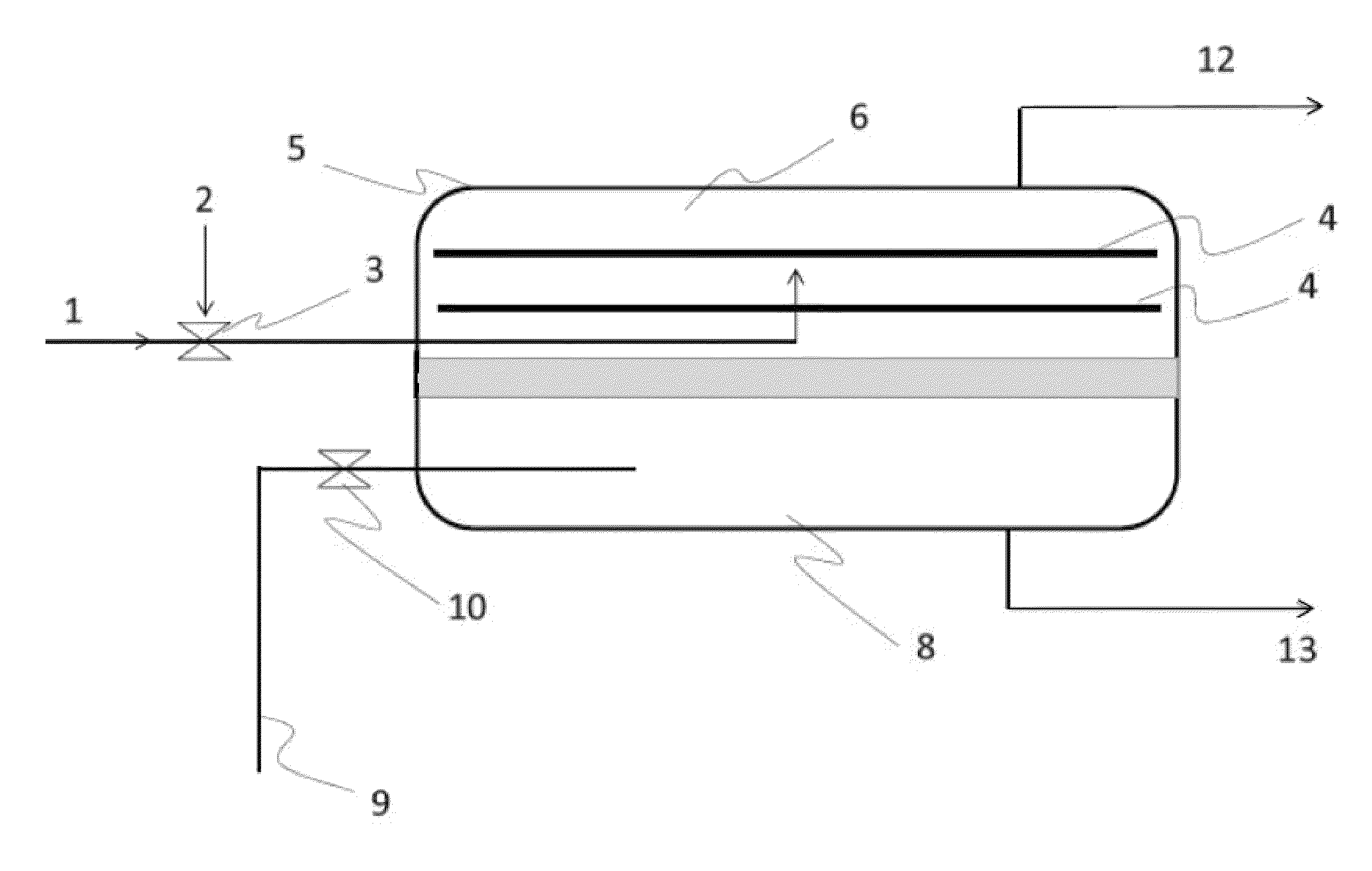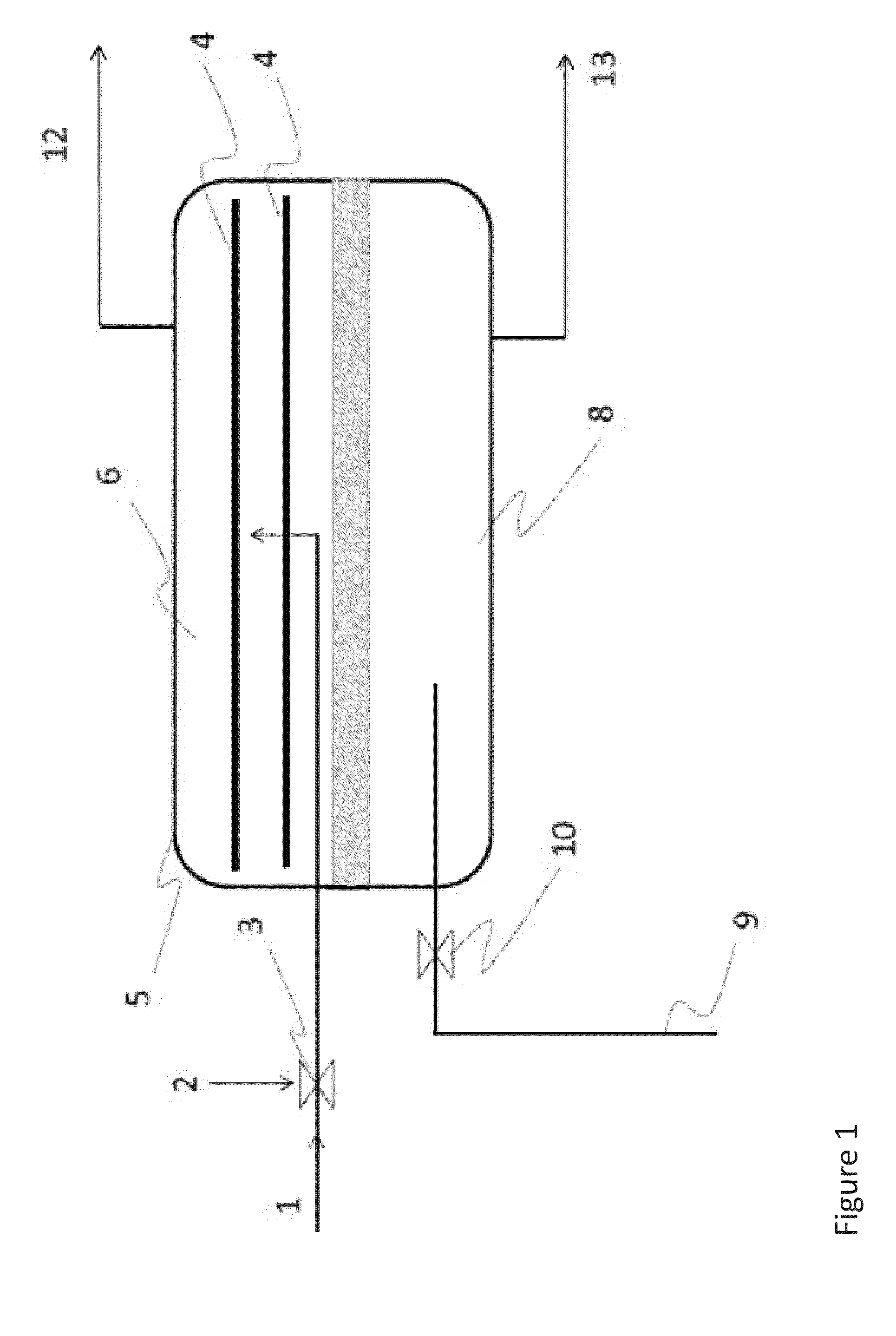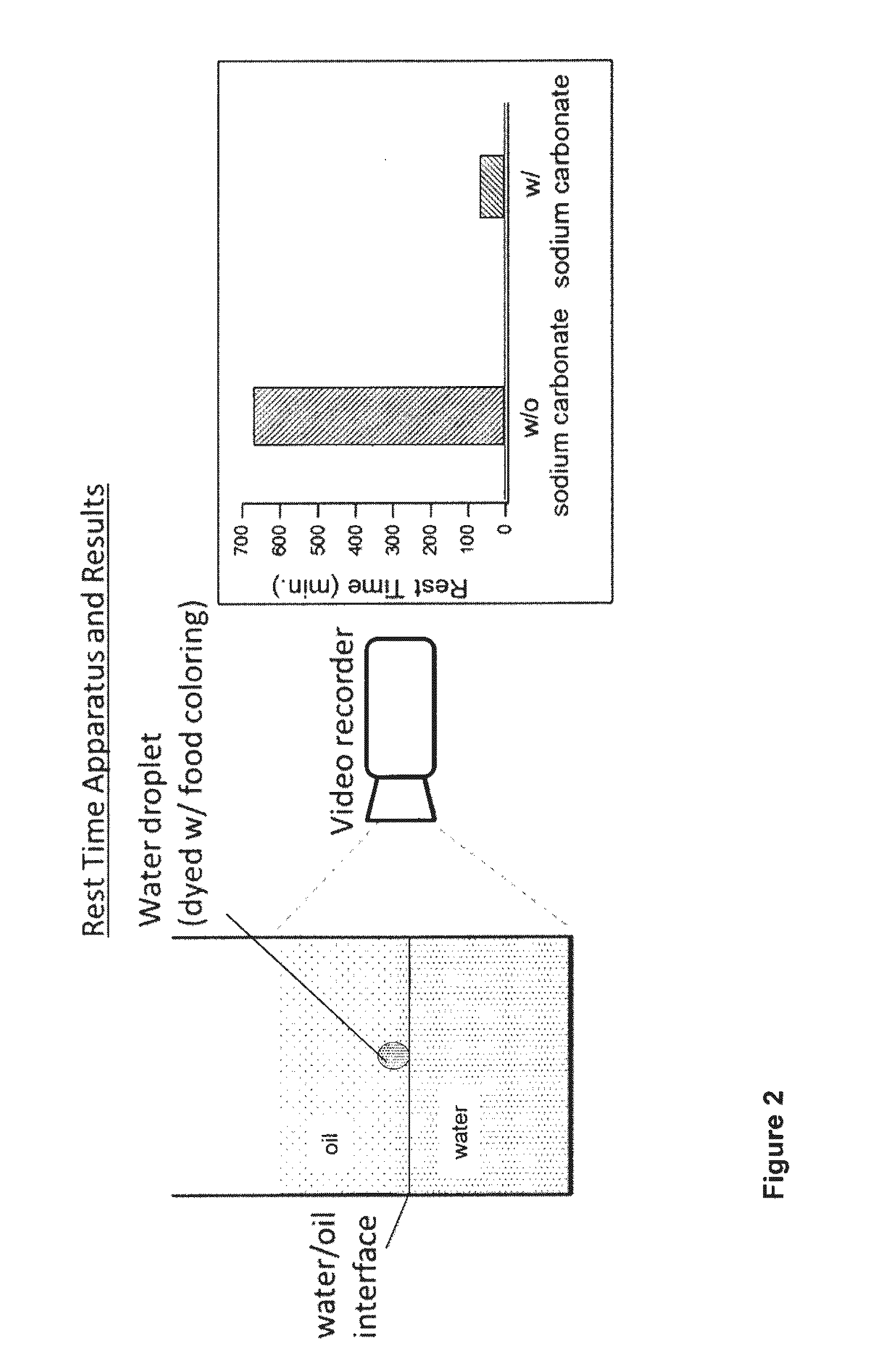Desalter operation
a technology of desalters and desalters, which is applied in the field of desalter operation, can solve the problems of reducing workable volume of rag layers, shortening the electric circuit, and especially problematic formation of rag layers, so as to improve the separation of oil and water phases, promote dehydration of emulsions, and enhance dehydration of oil/water emulsions
- Summary
- Abstract
- Description
- Claims
- Application Information
AI Technical Summary
Benefits of technology
Problems solved by technology
Method used
Image
Examples
example 1
[0031]Rest Time Measurement of Crude without Sodium Carbonate
[0032]The Rest Time method was used to measure the stability of the water / oil interface and its effect on preventing water droplets to immerse into the bottom water phase. In this measurement 85 mL of crude is left on 220 mL deionized water in a cylindrical glass container with internal diameter of 7.7 cm. After 30 minutes several droplets of water, which was dyed with food coloring, are dropped on the oil surface. When the droplets reach the interface between water and oil they rest at that interface before immersing into the water phase. The “Rest Time” is the time measured with the aid of a video camera, a water droplet rests at the water / oil interface before entering and immersing into the water phase.
[0033]The average rest time when no sodium carbonate was used in effluent water was measured to be 671 minutes; the simplified Rest Time experimental setup and results are shown in FIG. 2.
example 2
[0034]Rest Time Measurement of Crude with Sodium Carbonate in Water
[0035]The Rest Time value when 0.1% sodium carbonate was added to the water phase below the oil phase was measured at 66 minutes. Examples 1 and 2 therefore demonstrate that when sodium carbonate was added to the water phase the oil / water interface was weakened and the water droplets were able to penetrate through the water / oil interface at much shorter time.
example 3
[0036]Electrostatic Dehydration and Precipitation in the Absence of Sodium Carbonate
[0037]Aliqots of water and crude oil were heated to 85° C. Preheated water (4 mL)
[0038]was added to 90 mL. of preheated crude oil and blended for 10 seconds at half full power using a Waring™ blender to generate a water-in-oil emulsion. The emulsion (74.2 mL) of was then poured in a transparent vessel of an Electrostatic Dehydration and Precipitation Tester (EDPT) (from Inter AV inc.) which was preheated to 90° C. and contained 0.8 mL water. The vessel's cap was tightened and temperature was then increased to 120° C.
[0039]Voltages of 500, 1500 and 3000 volts for duration of one minute were applied respectively at 10, 21, 32 minutes after the EDPT reached 120° C. A voltage of 3000 volts for duration of one minute was applied at 43, 54, 65, 75, 105 and 120 minutes after the EDPT reached 120° C. The amount of the effluent water at the bottom of the vessel was measured at 5, 16, 27, 38, 49, 60, 71, 101, ...
PUM
| Property | Measurement | Unit |
|---|---|---|
| vertical distance | aaaaa | aaaaa |
| vertical distance | aaaaa | aaaaa |
| particle sizes | aaaaa | aaaaa |
Abstract
Description
Claims
Application Information
 Login to View More
Login to View More - R&D
- Intellectual Property
- Life Sciences
- Materials
- Tech Scout
- Unparalleled Data Quality
- Higher Quality Content
- 60% Fewer Hallucinations
Browse by: Latest US Patents, China's latest patents, Technical Efficacy Thesaurus, Application Domain, Technology Topic, Popular Technical Reports.
© 2025 PatSnap. All rights reserved.Legal|Privacy policy|Modern Slavery Act Transparency Statement|Sitemap|About US| Contact US: help@patsnap.com



